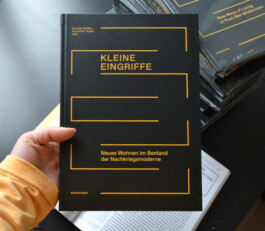Small Interventions
New Ways of Living in Post-War Modernism
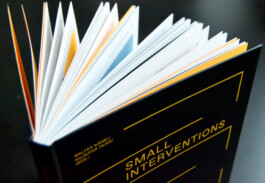
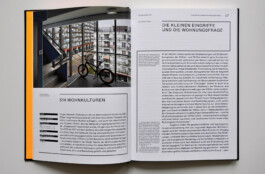
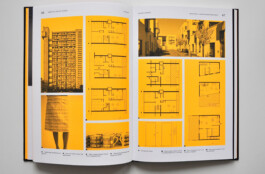

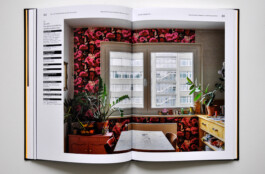

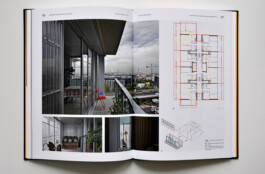
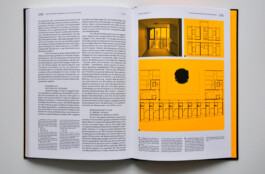
Published by Birkhäuser Verlag, 2016.
A photo series of the Pallasseum housing complex, designed by architect Jürgen Sawade, was developed in collaboration with photographer Michel Bonvin. Photo: Stephan Dietzel.
Essay by urban and housing scholar Maren Harnack. Photo: Stephan Dietzel.
Overview graphic with key figures and facts about the project's section of the volume. Photo: Stephan Dietzel.
In addition to theoretical essays, the project section discusses renovation examples of small-scale interventions. Shown here: the Mietshäuser Syndikat project WiLMa in Berlin-Lichtenberg. Photo: Stephan Dietzel.
Example on a small intervention by architect Erik Stenberg in a housing complex in Tensta, Stockholm. Photo: Stephan Dietzel.
Interviews with the architects focused on the conditions of production and the question of what constitutes a Small Intervention within the project. Here: Interview with Anne Lacaton. Photo: Stephan Dietzel.
The results of the teaching and research project at KIT, in which the concept was explored as a design strategy, are also reflected upon in the publication. Photo: Stephan Dietzel.
How can housing from the 1960s and 1970s be structurally renewed?
In this anthology, seven international authors analyze existing post-war modernist housing complexes in the context of societal and economic changes that have led to shifts in living and household structures: To what extent do the functionally optimized housing units of the post-war era still meet the demands of today's society? Can small-scale interventions lead to substantial improvements? And how can these be implemented under heterogeneous political, economic, and social conditions?


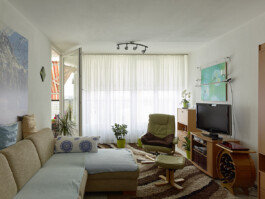

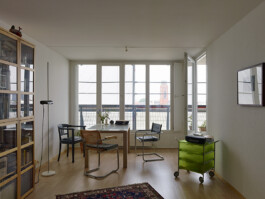
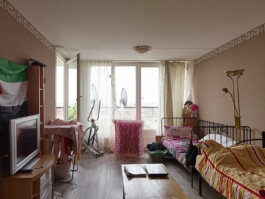
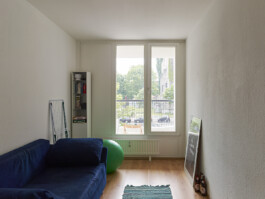
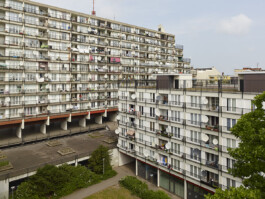
Photo series: Living rooms in the Pallasseum housing complex by Jürgen Sawade, Berlin-Schöneberg, 2016. Concept: Niloufar Tajeri. Photos: Michel Bonvin.
Photo series: Living rooms in the Pallasseum housing complex by Jürgen Sawade, Berlin-Schöneberg, 2016. Concept: Niloufar Tajeri. Photos: Michel Bonvin.
Photo series: Living rooms in the Pallasseum housing complex by Jürgen Sawade, Berlin-Schöneberg, 2016. Concept: Niloufar Tajeri. Photos: Michel Bonvin.
Photo series: Living rooms in the Pallasseum housing complex by Jürgen Sawade, Berlin-Schöneberg, 2016. Concept: Niloufar Tajeri. Photos: Michel Bonvin.
Photo series: Living rooms in the Pallasseum housing complex by Jürgen Sawade, Berlin-Schöneberg, 2016. Concept: Niloufar Tajeri. Photos: Michel Bonvin.
Photo series: Living rooms in the Pallasseum housing complex by Jürgen Sawade, Berlin-Schöneberg, 2016. Concept: Niloufar Tajeri. Photos: Michel Bonvin.
Photo series: Living rooms in the Pallasseum housing complex by Jürgen Sawade, Berlin-Schöneberg, 2016. Concept: Niloufar Tajeri. Photos: Michel Bonvin.
Housing estate Pallasseum designed by architect Jürgen Sawade (1974-1977), Berlin-Schöneberg, 2016. Photo: Michel Bonvin.
As editors, we put forward key theses on design strategies as well as on political and social transformation processes for discussion. Using five current examples from Germany, Austria, France, Sweden, and Switzerland, the concept of small-scale interventions is explored.
Essays: Tom Avermaete, Julia Gill, Maren Harnack, Owen Hatherley, Walter Nägeli, Erik Stenberg, Niloufar Tajeri, Kang Zhao. Projects: Erik Stenberg, Arge clemens krug architekten und Bernhard Hummel Architekt mit Anna Heilgemeir und Emma Williams, Rothen Architektur, Lacaton&Vassal, Andreas Rumpfhuber.
The book was launched in the framework of ARCH+ features in Berlin-Kreuzberg in January 2017. Talks by Erik Stenberg (Stockholm), Anna Heilgemeir and Oliver Clemens (Berlin), moderated by Anh-Linh Ngo.
“Working with the Original Structure”
Swedish architect Erik Stenberg discusses the renovation of post-war housing in the suburban settlement of Tensta in Stockholm. Based on historical and academic studies as well as intensive structural analyses, Stenberg uncovered hidden potentials and reconfigured the existing floor plans: “barely visible” (Stenberg).
“The Prefabricated Construction Remains Visible”
Anna Heilgemeir and Oliver Clemens present the renovation project WiLMa in Berlin-Lichtenberg and explain how they created diverse housing through small interventions in a former prefabricated office building, without making significant changes. Individuality versus standards, communal processes and participation, rents below the local average, as well as the Mietshäuser Syndikat model, which builds rental housing without creating private ownership.
Reviews in German: Deutschen Architektenblatt, by Christian Holl in marlowes, by Dina Dorothea Falbe in Baunetz
Related Projects
